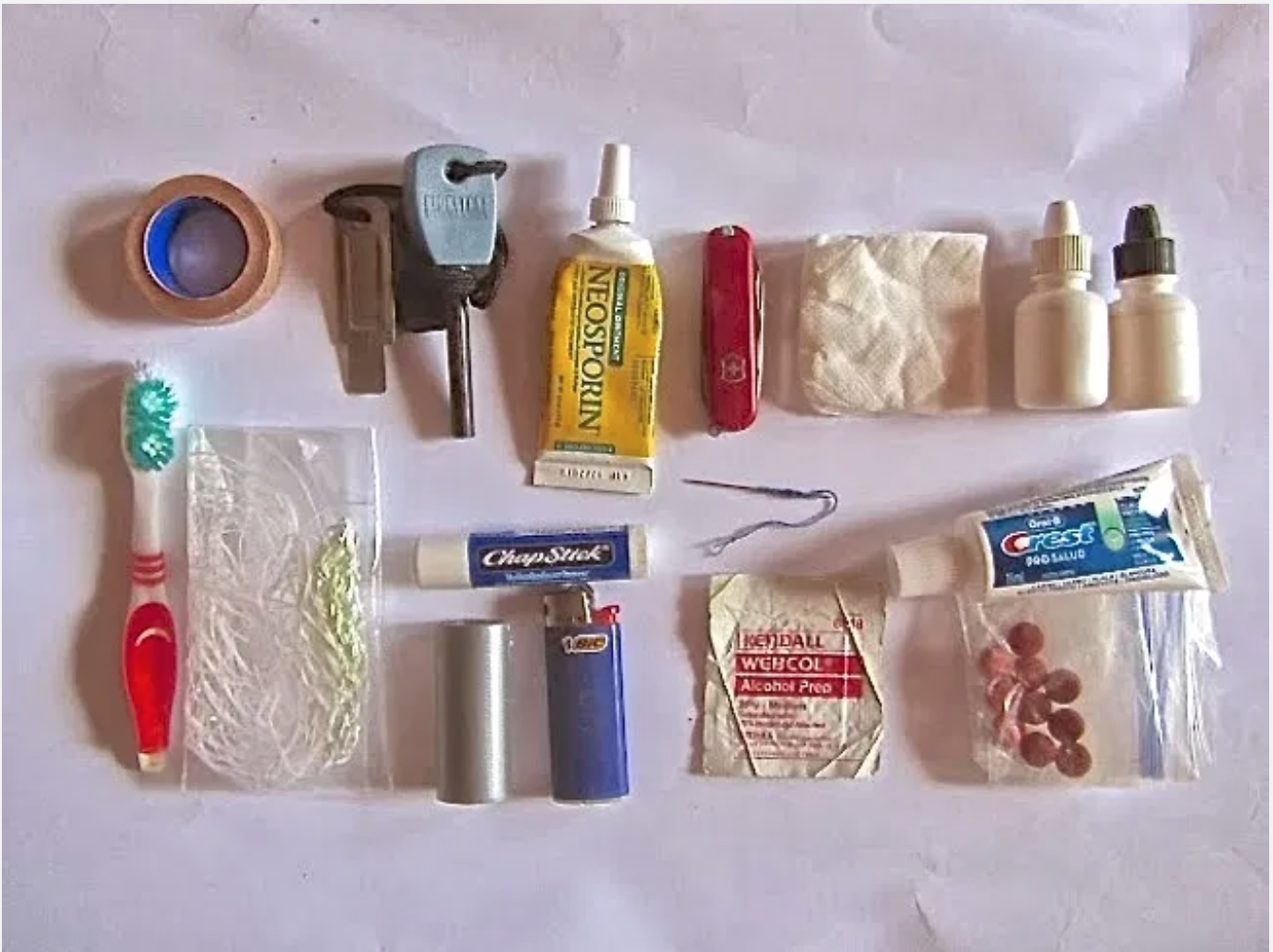The Five Fundamentals
When it comes to hiking, outdoor judgement is acquired over time and through personal or shared outdoor experiences.The trick is to build your own judgment by learning from the experiences of others rather than having to learn everything yourself. If you are new to outdoor activities, consider the discussion here and then tailor our recommendations to your own environment and circumstances.
Here at HFL we encourage you to bring the Five Fundamentals on every hike. Make sure to prepare before you go on your like, less you find yourself in a tricky situation without the proper gear.
1. Hydration
Bring water for twice the planned trip duration. An adult should drink eight 8-oz glasses of water a day. Hydration is even more important in Colorado due to the combination of higher elevations, temperatures, and low humidity. Whether you’re hiking Pikes Peak, or doing a 1 mile jaunt, you should always carry water with you.
Hiking Guide Tabitha says: “Hydration is especially important for those participants who are not used to living at a high altitude. Hydration can be the key for successful activities, or not.”
2. Nutrition
Bring food for twice the planned trip duration. If you are taking a half-day hike, you should at least carry a nutrition bar and maybe some dried fruit and nuts in case you wander off the trail and are out longer than planned. Outdoor activities expend energy, and you will be glad to have the small snacks when you begin to feel fatigued.
COO (Chief Outdoor Officer) Jeff says: “Pausing on the trail for five minutes to have a quick snack, can provide a much needed boost of energy, and allow a bit more time to take in some beautiful views.”
3. Protection
Bring clothing and protection appropriate for the expected environment. Always bring sun protection (sunglasses, sunscreen, head-gear, and clothing), layers of clothing, appropriate footwear, and some form of insect repellent.
Hiking guide Brit says: “Protection can mean different things to different people. However, in the mountaineering world, I primarily look at it from the perspective of, “Do I have with me what I would need to survive an unplanned overnight high up on the side of a mountain?” If someone gets injured and can’t get down, you can’t expect a helicopter to swoop in and rescue you. So, do I have the wind protection, rain protection, cold protection needed? Do you have skin and eye protection? The atmosphere is thinner the higher you go and the protection is needed all the more above tree-line.”
4. Navigation
Bring a primary, practiced means of navigation as a back-up system. For most day hikes, use a smartphone application that shows your trail (we like to use AllTrails), but always have a back-up means of navigation. If you are not comfortable using apps or maps, consider hiring a guide to show you how to use them.
CEO Bruce says: "We believe that hikers should use means of navigation that are available and practiced. A paper map is only helpful if you know how to read it. Your favorite hiking app is only helpful if you have a phone that is adequately charged and you know how to use the app. We help hikers understand the basics needed to navigate safely without getting buried in the details."
5. Mitigation
Bring extra items to use for contingencies or the unexpected. Things like a basic first aid kit, emergency signaling methods, and illumination. For more extensive outings, carry materials to start a fire, a multi-tool with a knife, and perhaps even an emergency shelter. Hike for Life guides always carry these basic supplies.
Hiking guide Lauren says: “I always carry my PLB (Personal Locator Beacon), thermal blanket, paracord with a whistle and compass, rope, mirror, matches, and a fire starter.”
The Hike For Life Team








